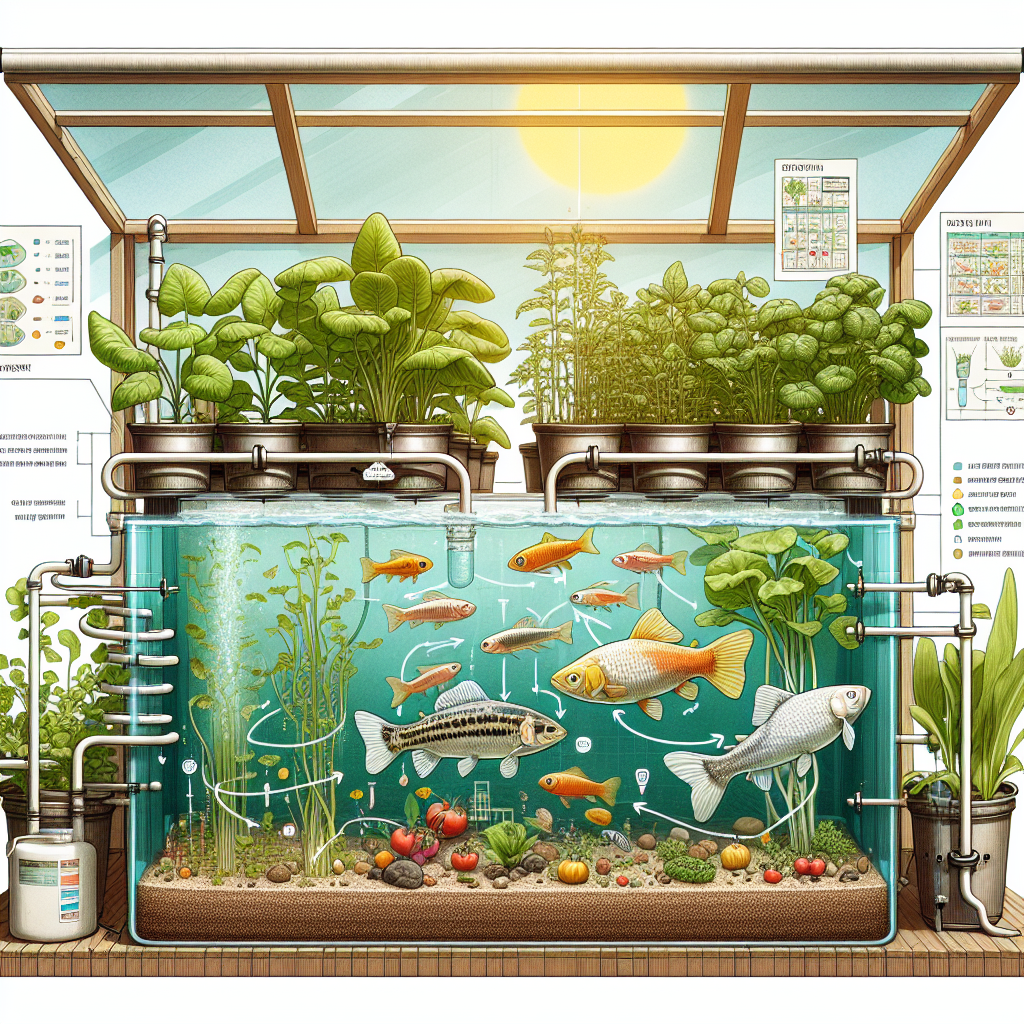There are several types of aquaponic systems, each with its own advantages and best use cases:
Media Bed Aquaponics
This is one of the most common and beginner-friendly systems.

Key features:
– Uses containers filled with growing media like gravel or expanded clay
– Employs a flood and drain cycle
– Suitable for a wide variety of plants, including those with large root systems
Advantages:
– Simple to set up and maintain
– Good biofiltration
– Inexpensive to implement
– Great for small-scale systems
Best for:
Backyard gardeners and beginners[3]
Deep Water Culture (DWC) / Raft System
Also known as floating raft aquaponics, this system is popular for commercial production.

Key features:
– Plants float on rafts with roots submerged in nutrient-rich water
– Requires separate filtration systems
– Typically uses large water volumes
Advantages:
– Highly scalable for commercial use
– Stable environment resistant to fluctuations
– Efficient for growing leafy greens
Best for:
Large-scale commercial operations, especially in warmer climates[3]
Nutrient Film Technique (NFT)
This system is adapted from hydroponic methods and is space-efficient.

Key features:
– Uses horizontal pipes with shallow streams of water
– Plants are placed in holes along the pipes
– Roots hang down into the nutrient stream
Advantages:
– Space-efficient
– Easy to access and harvest
– Lower labor inputs
Best for:
Commercial operations, particularly for growing leafy greens and herbs[1][3]
Vertical Aquaponics
This system maximizes space utilization by growing plants vertically.

Key features:
– Plants arranged in vertical tiers or towers
– Water trickles down through the system
Advantages:
– Highly space-efficient
– Good for urban environments
– Ergonomic design
Best for:
Areas with limited horizontal space, urban farming[1]
Hybrid Systems
These systems combine elements from different aquaponic methods to create a more versatile setup.
Key features:
– May combine media beds, NFT, and raft systems
– Customizable to specific needs
Advantages:
– Flexible and adaptable
– Can optimize for different plant types in the same system
Best for:
Growers looking to maximize efficiency and diversity in their crops[1]
Each of these systems has its own strengths and is suited to different scales and types of production. The choice of system depends on factors such as available space, climate, target crops, and scale of operation.
This work © 2025 by Gregory Kuziw is licensed under CC BY-NC-ND 4.0
Citations:
[1] https://agrinextcon.com/revolutionize-farming-innovative-aquaponic-systems/
[2] https://www.bihydro.com/types-of-aquaponic-systems/
[3] https://www.ecolifeconservation.org/updates/types-aquaponics-systems-design/
[4] https://sageuniversity.edu.in/blogs/aquaponics-a-future-farming-system-and-types-of-aquaponics-technology
[5] https://www.howtoaquaponic.com/designs/aquaponics-systems/
[6] https://aquaponics.com/methods-of-aquaponics/
[7] https://www.youtube.com/watch?v=0jWs0ApgLF0
[8] https://gogreenaquaponics.com/blogs/news/the-different-types-of-aquaponics-system


